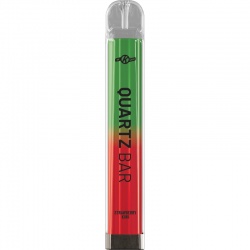| Does E-Liquid Contain Formaldehyde?28 April 2016 We all know that vaping isn't completely harmless. In an ideal world no-one would be breathing in anything other than fresh, clean air, but when the alternative is cigarettes, it shouldn't be much of a choice between vaping and smoking. I'm not a doctor (yes, I know you're shocked) but these guys are, and they seem to think that vaping is "much safer" than smoking. There have been various health claims from the opposite side, though, claiming that vaping is in fact very dangerous. One of the most talked-about is a January 2015 study published in the New England Journal of Medicine (NEJM), suggesting that e-cigarettes emit dangerous levels of formaldehyde. So, is this true? The StudyThe study in question involved using a tank system e-cigarette to examine the vapour produced. This aerosol was then collected and analysed for formaldehyde. Two voltage settings were used; low (3.3V) and high (5V). The experiment found that, at the lower voltage, no formaldehyde was present, but at the higher voltage there were high levels detected. The authors concluded that the lifetime cancer risk from vaping was higher than smoking as a result of these findings. So, over a year later, why has vaping not been banned if it's so harmful? Is everyone who's ever vaped destined for a gruesome end? The answer is no (at least not from vaping...). What's Wrong with the Study?The trouble with this study is that it was done at a very high voltage level. When this happens to vaporisers, they go through the liquid too quickly, dry out and create an unpleasant taste. This is a known phenomenon amongst vapers, and is called a 'dry hit'. These dry hits are so unpleasant that vapers try to avoid them at all costs, making the experiment unrealistic. Dr Michael Siegel puts it best by saying: “There’s just one problem with the study, but the problem renders its conclusions invalid. The conditions... were unrealistic and under such conditions, a vaper would never be able to use the product. This is because the wattage being used was so high that the vaporiser was overheated (for a conventional e-cigarette it would likely damage or burn the coils), creating a horrible taste which a vaper could not tolerate. Essentially, what this study demonstrates is that if you overheat a vaping system, it will produce high levels of formaldehyde. However, such conditions are not realistic, therefore, extrapolating from this study to a lifetime of vaping is meaningless.” Is Formaldehyde Still a Risk?While this study highlights some concerns, it has been largely overblown and sensationalised. It would be useful to educate vapers on how to avoid dry hits as much as possible, since they seem to produce formaldehyde at high voltages. However, the risk of cancer from formaldehyde during vaping is negligible, since regular vapers wouldn't heat up their devices to anywhere near the levels of the experiment. Chalk up another point for vaping!
| ||||||||||||||||||||||||||||||||||||||||||||||||||||||||||||||||||||||||||||||||||||||||||||||||||||||||||

-pj.jpg)




.jpg)









